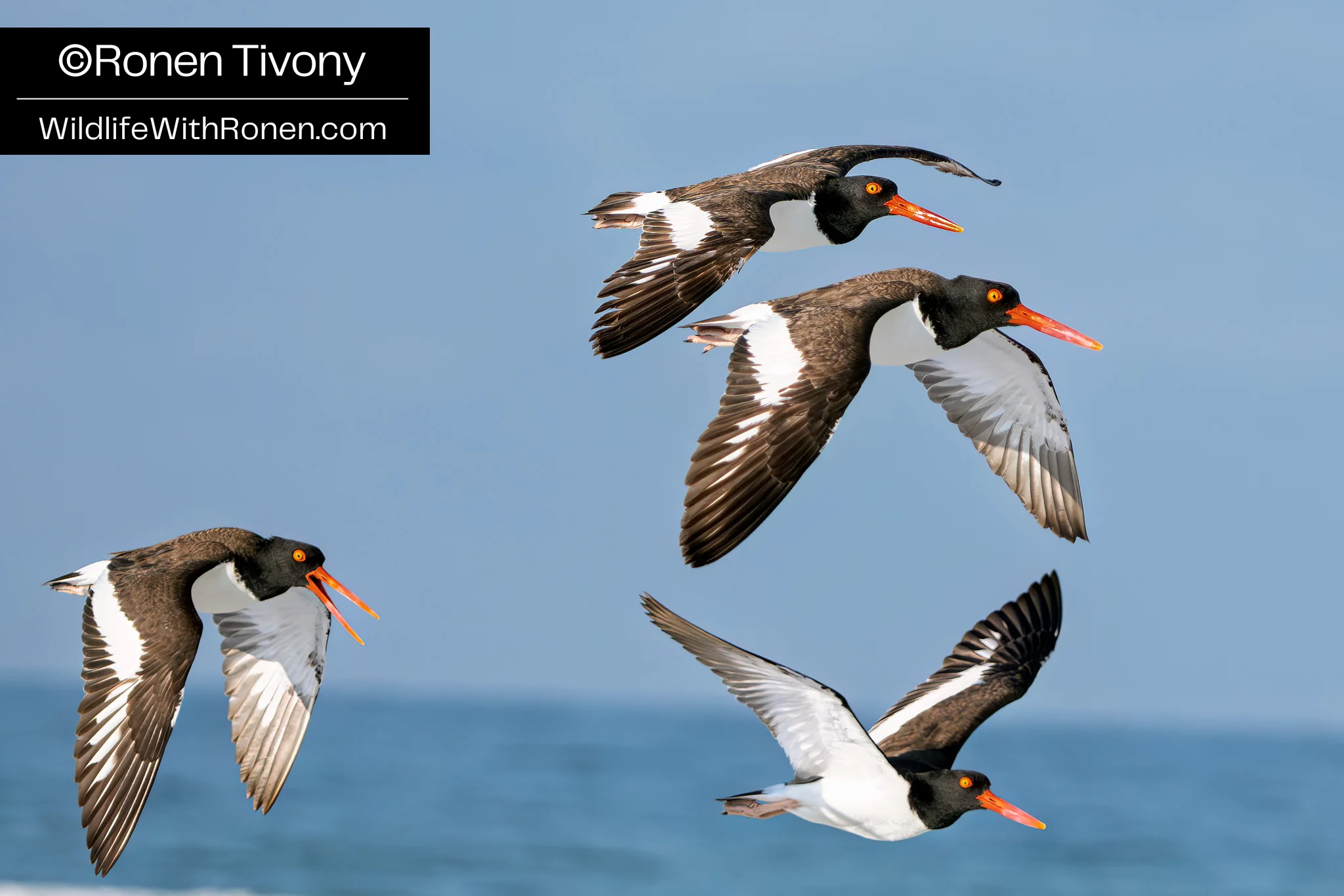AE and Archie chase off a rival pair of American Oystercatchers during a territorial dispute at Fort De Soto Park, Tierra Verde, Florida, on May 21, 2025. ©Ronen Tivony
This morning at Fort De Soto Park, two pairs of American Oystercatchers were observed engaging in a territorial chase along the shoreline. The well-known breeding pair, AE and Archie, who are raising two chicks this season, successfully chased off a rival pair that had encroached on their nesting territory. Their sharp calls echoed across the dunes as they flew with purpose, defending their prime nesting and feeding grounds.
Territorial disputes like this are a common part of the American Oystercatcher’s breeding season. During this period, Fort De Soto’s beaches become an active environment where courtship, nesting, and competition unfold.
American Oystercatchers nest on the ground, typically in shallow scrapes in sandy or shell-covered areas just above the high-tide line. Because their nests are so exposed, defending territory is critical for protecting eggs and chicks from predators and disturbance.
Today’s interaction was a clear example of territorial behavior, with AE and Archie asserting dominance to maintain control of a favored stretch of beach.
Fort De Soto Park, located in Tierra Verde, Florida, is an important habitat for shorebirds along the Gulf Coast. Its relatively undisturbed beaches provide key breeding grounds for species like the American Oystercatcher, whose populations face ongoing challenges from habitat loss and human activity.
Recent conservation efforts at Fort De Soto—including protective barriers around nesting areas, signage, and public education—have greatly contributed to an increase in oystercatcher breeding success.
A special shout-out goes to my friend Lorraine Margeson, a dedicated shorebird volunteer and retired shorebird monitor, who works tirelessly to educate the public and wildlife photographers about the importance of keeping distance from nesting birds. Her efforts are vital to ensuring the safety and success of these vulnerable shorebirds.
American Oystercatcher Facts:
- Named for their ability to open mollusks with their strong, orange bills.
- Typically lay 2–3 eggs per clutch, camouflaged in sand and shells.
- Both parents share incubation and chick-rearing duties.
How You Can Help Protect Shorebirds:
- Respect posted signs and keep clear of roped-off nesting zones.
- Avoid flying drones or bringing dogs near shorebird habitats.
- Report sightings of banded birds or unusual behavior to local wildlife groups and the American Oystercatcher Working Group: https://amoywg.org
- Share responsible observations to support conservation awareness.
